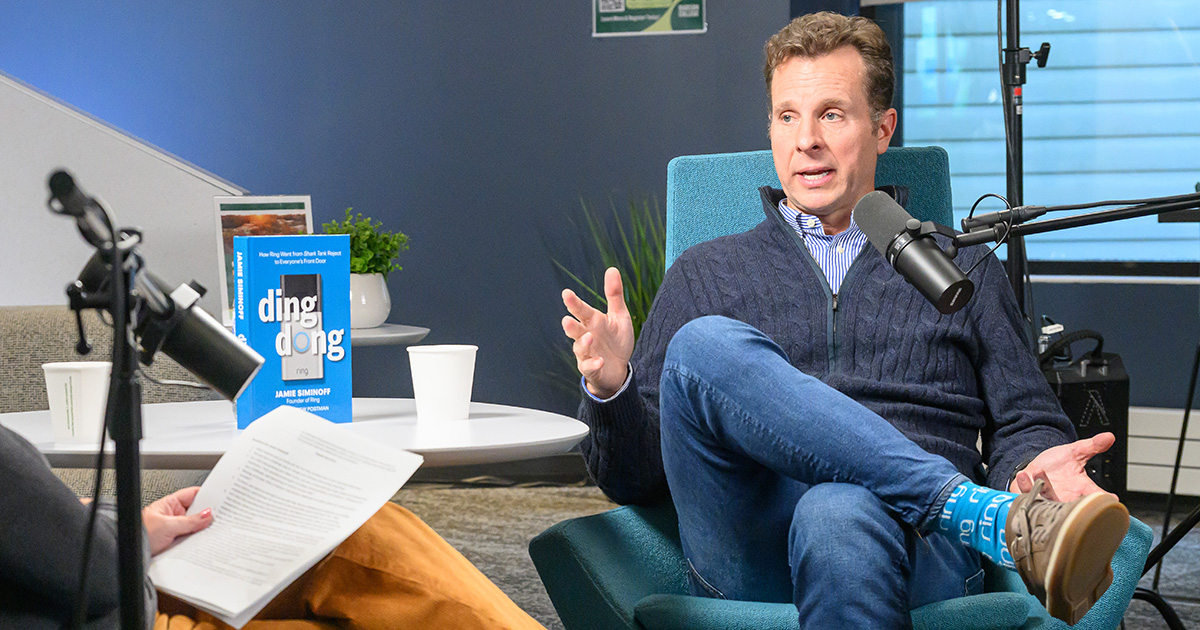The Collection That Connects Babson and Isaac Newton

Next time you’re strolling beneath the grove of apple trees on the North Lawn near Tomasso Hall, think of Sir Isaac Newton. That’s right: Those eight trees are descended from the famed tree whose apple Newton watched fall to the ground in 1666, leading the prolific scientist, author, and theologian to formulate the law of universal gravitation.
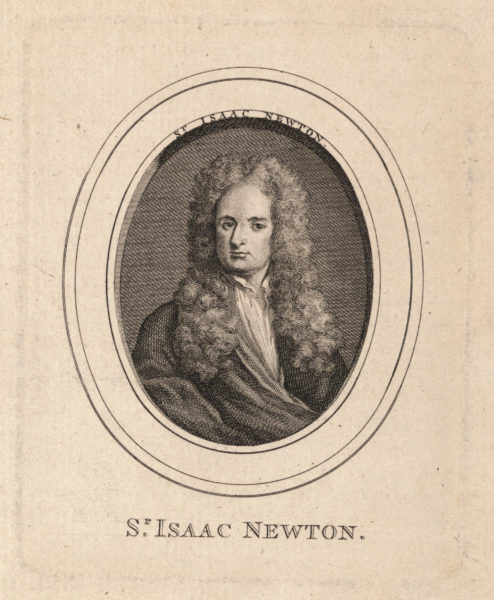
In fact, Newton’s roots at Babson College run even deeper. Founder Roger Babson and his wife, Grace, were fascinated with Newton as a polymath entrepreneur, amassing the dazzling Grace K. Babson Collection of the Works of Sir Isaac Newton. It’s now a landmark collection at The Huntington Library, Art Museum, and Botanical Gardens in San Marino, California. Complemented by The Huntington’s own materials, this collection of “Newtonia” is the largest in the United States. The Babson collection comprises more than 1,000 rare books; 54 manuscripts (most by Newton himself); plus ephemera, artifacts, and memorabilia.
“Newton is one of the most important and influential thinkers in the history of the world, and I think that’s why he appealed to Roger and Grace Babson: He thought very differently than most people around him, and his ideas were extraordinarily innovative,” says Joel Klein, Molina Curator for the History of Medicine and Allied Sciences at The Huntington.
The Babson collection has been on loan since 2006 at The Huntington, renowned for its special collections library devoted to preserving historical documents. Now, The Huntington is working with an international team of conservators and computer scientists to digitize Newton’s manuscripts, develop a computer vision method for watermark recognition, and use those watermarks to provide more accurate dates for the manuscripts. The ambitious project—which will bring chronological organization to Newton’s wide-ranging intellectual prowess—also will allow anyone to access images of Newton’s manuscripts at The Huntington Digital Library, and scholars will ideally have a new tool for understanding watermarks.
“Newton is one of the most important and influential thinkers in the history of the world, and I think that’s why he appealed to Roger and Grace Babson.”
Joel Klein, Molina Curator for the History of Medicine and Allied Sciences at The Huntington
But what does a long-dead scientist, fluent in Latin, have to do with modern entrepreneurship? In Newton, Roger Babson perhaps saw a glimmer of himself. Newton embodied the best ideals of a Babson education: creative thinking, entrepreneurship, innovation. In fact, Roger Babson was one of the few financiers who predicted the stock market crash in 1929, foresight that he attributed to his appreciation for Newton’s Third Law: Every action has an equal and opposite reaction, and “what goes up must come down.” Pretty impressive for Babson to be inspired three centuries later by a scientist born in 1643.
Collection for the Ages
The Babsons acquired much of the Newton collection at auction in the mid-1930s, and it showcases Newton’s boundless intellectual range. This is, after all, a man who discovered calculus; proposed new theories of color and light; revolutionized physics; built the first reflecting telescope; and helped to spearhead the Scientific Revolution. Not bad for a shy child born prematurely, small for his age, who reportedly retreated to the worlds of math and science after being taunted by a schoolyard bully.
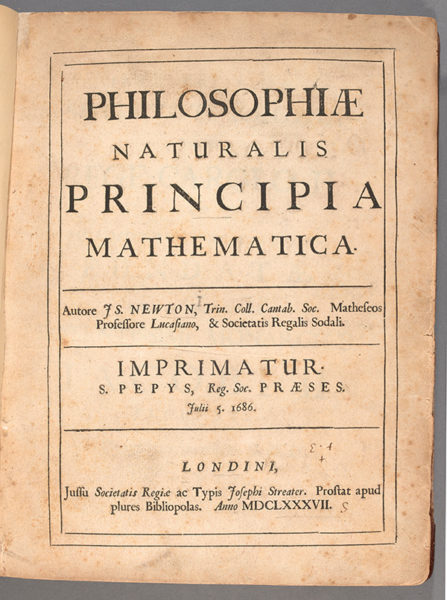 The collection includes many books that were a part of Newton’s library or that he himself annotated, including two first-edition copies of The Principia, his most influential work, which laid out his three laws of motion. Several of Newton’s books are even complete with dog-eared pages. (“He was a notorious dog-earer of pages,” Klein reveals.)
The collection includes many books that were a part of Newton’s library or that he himself annotated, including two first-edition copies of The Principia, his most influential work, which laid out his three laws of motion. Several of Newton’s books are even complete with dog-eared pages. (“He was a notorious dog-earer of pages,” Klein reveals.)
Then there’s Opticks, delving into the phenomena of light inflexion; several letters; a posthumously published book on calculus; alchemical notes and emblems; and a plaster death mask originally owned by Thomas Jefferson, made as a model for Newton’s tomb in Westminster Abbey. Newton’s Temple of Solomon manuscript, considered by historians to be his landmark theological work, is also included.
It’s a fascinating peek into a restless mind, admirable in sheer magnitude.
“It’s just the extraordinary nature of the collection which shows Roger and Grace’s genius,” Klein says. “It’s equally extraordinary that Babson College has this collection, because there’s nothing like it.”
Scholars soon will have even greater access to the collection, thanks to The Huntington’s digitization. In the meantime, the materials are painstakingly preserved, says Trustee Emerita Katherine Babson Jr. MBA’77, H’99, who represented the College—along with then-Board Chair Marla M. Capozzi MBA’96 and Trustee Emerita Elizabeth P. Powell MBA’76, P’01, G’25—on a trip to The Huntington in 2019 ahead of Babson’s Centennial, when part of the collection was temporarily on display on campus. At the library, they were delighted with the materials’ preservation in temperature-controlled settings, under tight security, tended by a dedicated staff of conservationists.
“Family-wise, it’s quite an exceptional thing that Roger and Grace put this collection together, and so much of Roger’s business theory is based on the theories of Isaac Newton.”
Trustee Emerita Katherine Babson Jr. MBA’77, H’99
“It made a big difference to us, knowing the care, attention, and importance of the collection to The Huntington,” says Katherine Babson, a distant cousin of Roger Babson who counts Newton’s death mask as her favorite piece of memorabilia.
For her, of course, the trip was intensely personal.
“Family-wise, it’s quite an exceptional thing that Roger and Grace put this collection together, and so much of Roger’s business theory is based on the theories of Isaac Newton,” she says. “And, to go from a teeny college to this—the largest collection outside of England of Newton material in the world—is remarkable.”
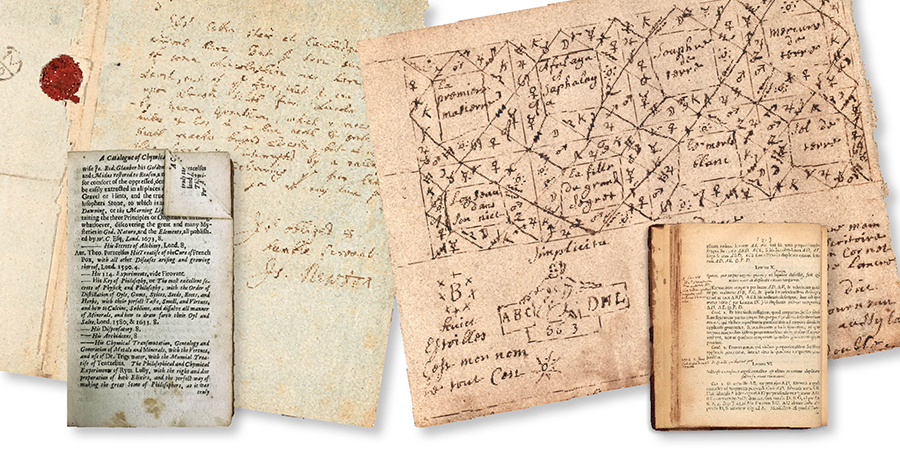
Lessons for the Future
At Babson Park, Newton’s legend also loomed large. In 1938, the Babsons bought the fore-parlour from his London abode and placed it within the new Babson Institute Library. In 1954, the first Newton apple tree sprouted on campus, purchased from the Pennsylvania Historical Commission, a gift from Roger to Grace.
Newton’s legacy lives on in the classroom, too. Senior Lecturer Charles Winrich, who teaches astronomy and physics, frequently incorporates Newton into lectures, which help illustrate his Renaissance Man-style versatility.
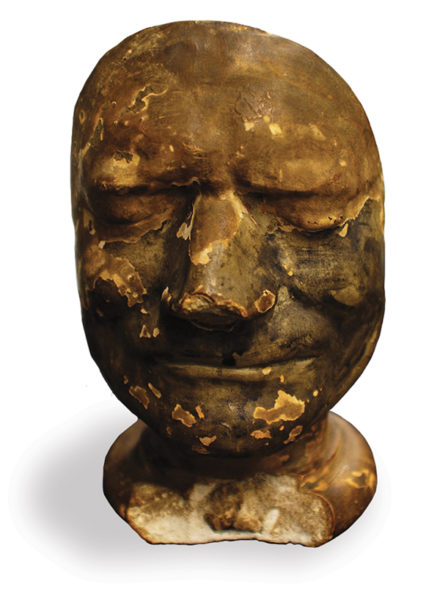
The Newton death mask originally owned by Thomas Jefferson
“I’d compare him to Elon Musk,” says Winrich, laughing. “The connection to the Babson curriculum, and to the idea of entrepreneurship in general, is that Newton was very much an entrepreneur who tried a lot of different things and succeeded in a lot of different areas. So often we get into our little academic silos and just think about certain things. He had a lot of interests and ideas but also a very systematic approach, which is the spirit of how we think about entrepreneurship today: finding problems and working on solving them.”
James Hoopes, Murata Professor of Ethics in Business, teaches the History of Ethics in Capitalism. Here, he offers his students a dose of Newtonian theory. As he explains, Roger Babson was visionary in that he applied Newton’s teachings—written in Latin, etched hundreds of years ago—to the modern stock market while others doubted him.
“We have a phrase at Babson: ‘Entrepreneurship of all kinds.’ Roger Babson was an entrepreneur of many kinds, maybe. The point is that students should be open to the world, open to experience, open to the world of thought, and not narrow themselves by thinking that business is just about trend lines,” Hoopes says. “What I’m trying to communicate to the students is that nothing is irrelevant to their studies.”
Klein has a similar hope for the Babson community worldwide.
“I want more people at Babson to know about their extraordinary heritage,” he says. “If more people find inspiration in Newton, I think it’s a great thing. I hope that legacy continues to live on at Babson and that people continue to find in Newton an inspirational figure for changing the world.”
Posted in Community, Entrepreneurial Leadership, Insights




